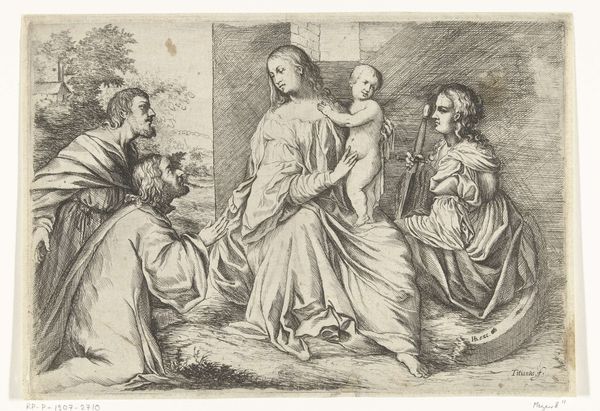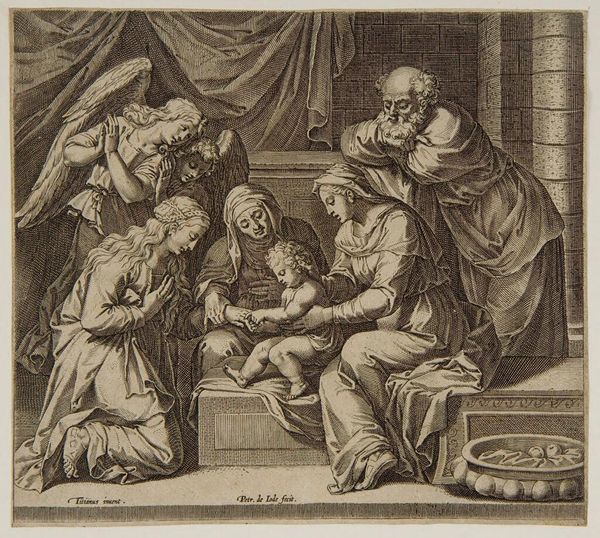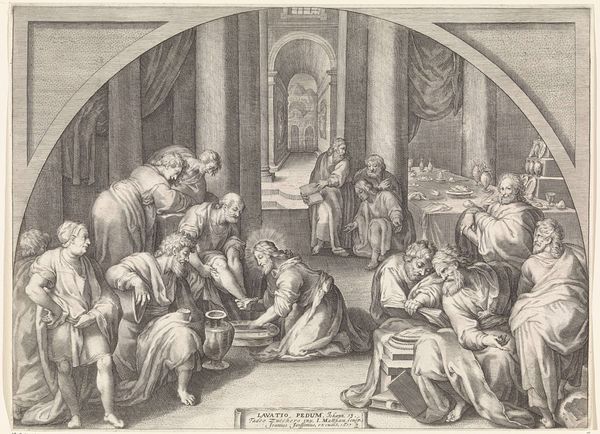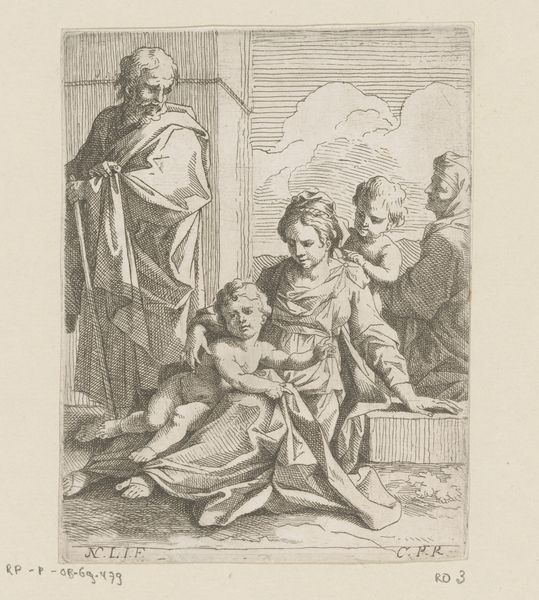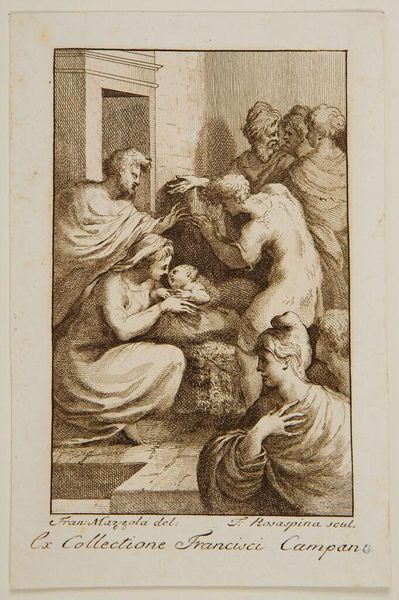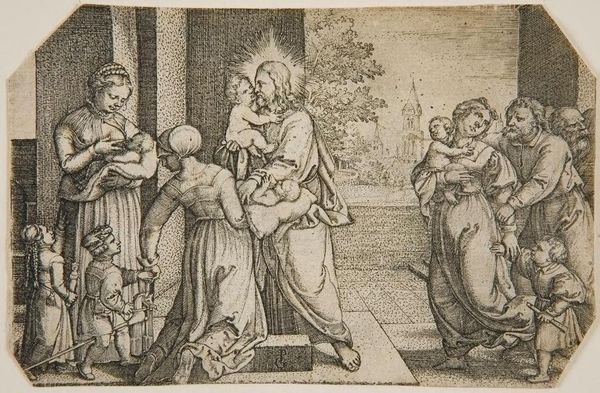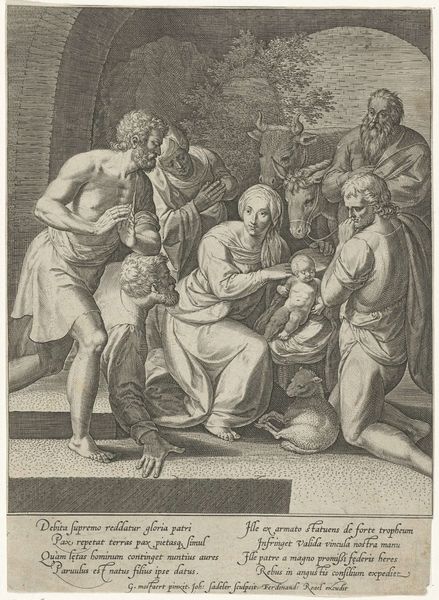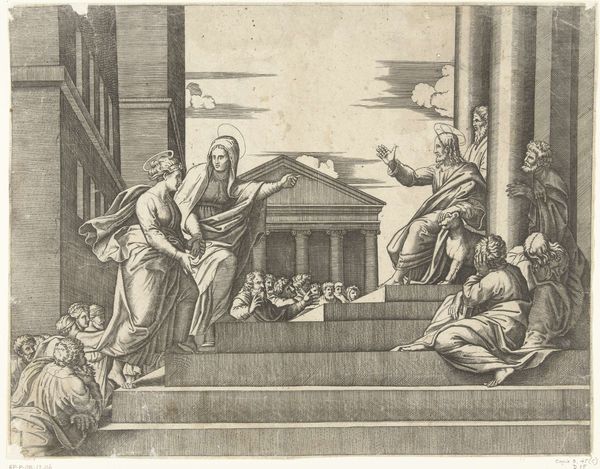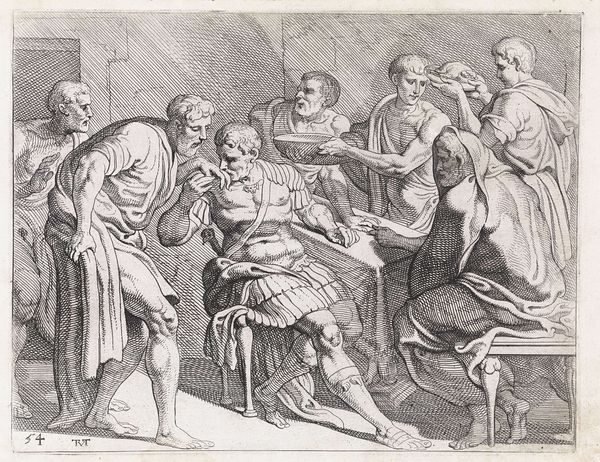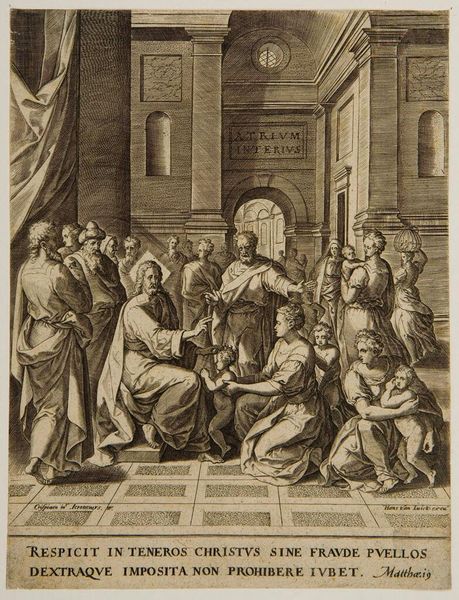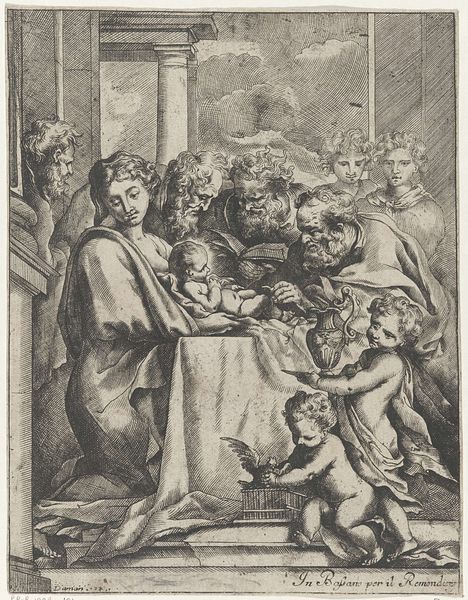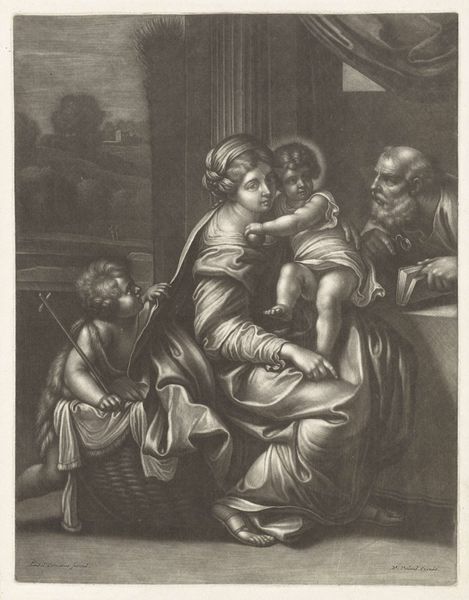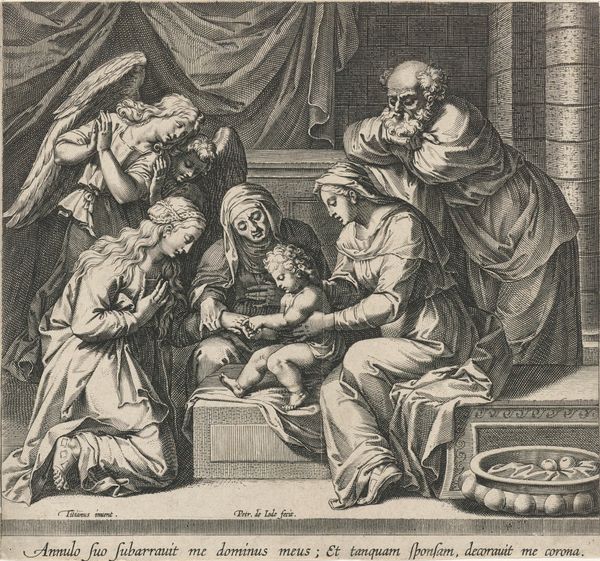
engraving
#
baroque
#
figuration
#
history-painting
#
engraving
Dimensions: height 165 mm, width 340 mm
Copyright: Rijks Museum: Open Domain
Editor: We’re looking at "Adoration of the Magi," an engraving made between 1672 and 1711 by Augustinus Terwesten, currently held at the Rijksmuseum. The detail in this piece is astounding, especially considering the medium. How do you approach something so intricate? Curator: Initially, my focus is on the articulation of form. Note how Terwesten orchestrates the scene into distinct groupings, almost like stage sets. How does this structuring affect your perception of the narrative itself? Editor: It does separate it, almost like multiple vignettes within the same frame. There’s the Holy Family on one side, the approaching Magi on the other, with the stable animals observing. Is that deliberate? Curator: Precisely. It enables Terwesten to dissect and present the narrative, guiding the viewer's eye. Observe also how light and shadow, meticulously rendered through hatching and cross-hatching, define the figures and objects, lending depth and texture. The lines themselves create the mood, don’t they? Editor: Absolutely. The shading makes it dramatic and almost theatrical. What would you say is the most crucial formal element here? Curator: I’d suggest examining how Terwesten uses linear perspective to construct space. The receding columns and architectural elements create a strong sense of depth. Moreover, it is a fine demonstration of Baroque sensibilities even in a small engraving. It draws your eye deep into the composition. Editor: That's a great point, the linear perspective definitely wasn’t something I considered, though it's very pronounced and organizes the image. I'll remember to consider perspective, too, during my analyses. Curator: Yes, analyzing such organization will lead to more insight! It has been quite a journey in this masterly-executed, highly complex image.
Comments
No comments
Be the first to comment and join the conversation on the ultimate creative platform.
